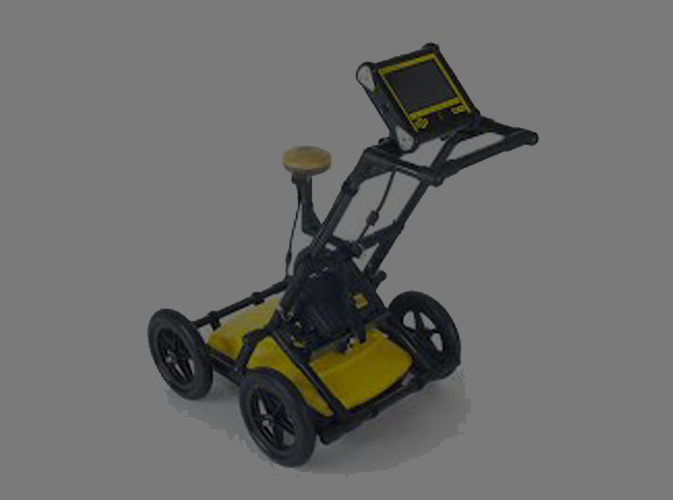How It Works:
Bullseye Locating technicians are NULCA certified to conduct Ground Penetrating Radar locating. At Bullseye Utility Locating, we use high-tech GPR equipment for the tracing of structures, utility lines and features buried deep under the ground. GPR (Ground Penetrating Radar) is one of the most efficient technologies which can employ radio waves from 1 to 1000 MHz Frequency range. GPR consists of three main parts; control unit, antenna and power supply. It’s an advanced equipment which is commonly used in construction, utility locating, environmental studies, geographical surveys, etc.
Ground Penetrating Radar works by sending electromagnetic waves into the ground which results in the echoes from the subsurface object. These echoes get recorded by the GPR to acquire the real-time visuals of the utilities buried under the ground.
Why Use GPR:
There is a diverse range of equipment’s available in the market used to locate buried utilities. The equipment usually energizes the cables and metal pipes with the electric current using the magnetic field. However, when access is challenging, and the object underneath the ground is not easily locatable with the current (nonmetallic elements), this is where GPR serves as the best alternative. GPR provides you its own source of energy and helps in locating both metallic as well as non-metallic objects buried deep inside the ground, not only this, but it also detects soil conditions.
Why GPR is an Effective Technique:
GPR can effortlessly locate water, and sewage lines, concrete structures, manholes, gravesites, septic tanks, and the list goes on. GPR is indeed one of the safest techniques as it is a nondestructive procedure you can locate your underground utilities with.
GPR Limitations:
Ground penetrating radar Limited by the type of soil you can use the us GPR suitability map ( https://www.geophysical.com/wp-content/uploads/2017/11/GPR-Soil-Suitability-Map.pdf) and if your area is ideal for ground penetrating radar. If targets are deeper than the penetration of the radar frequency targets may not be found. If targets composition is very close or identical to the surrounding ground it may not reflect back a signal ground penetrating radar can not penetrate through metal or salt water soil such as silt and clay absorb the signal making it difficult to penetrate deep or to see targets. Smaller targets that may be deep or very close to the service may also be undetectable . each site is different palisi your underground utility locator for more information.
GPR Limitations:
Ground penetrating radar (GPR) is a non-destructive testing method used to locate materials such as concrete, plastic, metal, steel, rock, soil, ice, and pavement. At Bullseye Utility Locating LLC, we use the latest GPR technology to provide critical information on utilities, structural elements and other potential obstructions within existing concrete structures or underground. Because depth of exploration is dependent upon the electrical properties of material(s) inspected and interpretations are opinions based on judgments made from those acquired radar signals and/or other data, Bullseye Utility Locating LLC does not guarantee the accuracy or correctness of interpretations and Bullseye Utility Locating LLC will not accept liability or responsibility for any loss, damage, or expense that may be incurred or sustained by any services or interpretations performed by Bullseye Utility Locating LLC. Even though, Bullseye Utility Locating LLC uses the best technology available in the market for Utility Location we cannot detect every buried utility. A buried line or pipe must conduct an electronic signal, transmitted by our equipment, to be accurately detected. At job sites, there will more than likely be subsurface utilities that cannot be detected, and many times utilities pass through a site without an above ground access point, or giving any other indication that they are there. Our friendly and knowledgeable staff is always available to explain any limitations as they pertain to your site. For these reasons, Bullseye Utility Locating LLC is not responsible for any nonconductive lines (Non-Metallic, PVC, Water Line, Etc.) and for any conductive lines with no accessible connection point or those that do not appear on blueprints, maps, or as-builts provided by customer prior to locating. Bullseye Utility Locating LLC is not responsible for any loss or damage arising out of the use of, or reliance on the data collected or the report presented.


